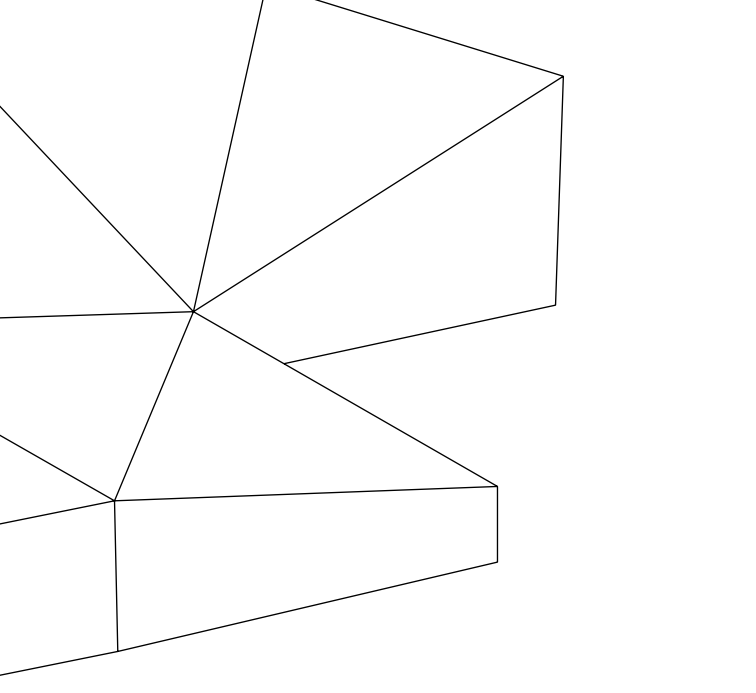The Concept
In the last decade polygonal computer design had a great impact on architects and designers. This trend
manifested in faceted shapes, triangles, and organic surfaces produced with the use of polygons. The polygonal style that appeared at that time also had an impact on Logifaces. Another aspect is sophisticated and widespread computer-generated augmented reality. 3D virtual reality blurs the difference between the planar and the spatial worlds. This paradox inspires many designers and artists today as well. My short introduction with some spectacular examples introduces the designers’ approach to triangular and flattened geometry.
After the turn of the millennium Computer Aided Design (CAD) programs and platforms became much more powerful than in the past. As computing capacity problems faded, designing complex shapes became much easier than before (Weisberg D. E. “The Engineering Design Revolution — The People, Companies and Computer Systems That Changed Forever the Practice of Engineering” Cyon Research, 2008).
However, the implementation of organic forms is still challenging, as raw materials are usually
accessible in basic shapes, typically in rectangular boards or blocks. A possible way to execute multiple-curve forms is polygonal reduction. One of the first pioneers of this method was Buckminster Fuller (Fuller B, López-Pérez D “Pattern-Thinking” Lars Müller Publishers 2019), who created geodesic domes including arrays of various triangles from the 1950’s. This was possible without CAD programs.
The production of reduced freely formed shapes required huge computing capacity as it involves many unique triangles and even more unique construction details. An early example of this kind of non-standard architecture is a building located in Budapest called the “Whale”, which was designed by Kas Oosterhuis (Oosterhuis K “Towards a New Kind of Building: A Designers Guide for Non-Standard Architecture”
nai010 publishers 2011) in 2007. The organic shape covered by triangular shaped glass planes fills the void left between two old, longitudinal warehouses on the bank of the River Danube.
In addition to architects, faceted style inspired designers as well. A remarkable example of this in the fashion industry was created by Issey Miyake, the Distortion bag, designed in 2013. This bag is made of small, identical rigid triangles attached to a flexible textile mesh. In several steps one can transform the flat structure into a three-dimensional organic shaped bag. This piece leads to my next topic, the transition from 2D to 3D.
A Taiwanese fashion brand, called “Jump from paper” applies graphics and 2D cartoon-like illustrations to
create real-world 3D bags that literally look as if they ‘jumped from paper’. Despite their bags looking completely plain, they do have some inner 3D space in order to perform the storage function. Sharona Merlin’s “Slim cup” from 2010 is an archetype cup from one side - though it is actually flattened. Even though it is questionable how it functions as a cup, it is a thought-provoking idea as a conceptual design.
My last example in this topic is a short animation, Rabbit and Deer. It was created by Péter Vácz in 2013 and won countless awards worldwide. According to the teaser “The friendship of Rabbit and Deer is put to the test by Deer’s new obsession to find the formula for the 3rd dimension...” In other words, the Deer escapes the 2D world for 3D while the Rabbit has to stay in 2D. The movie explains the dimensional differences in a funny and emotional way.
I believe that every age has an emerging vision that attracts designers. These ideas often turn into superficial styles. Looking back to the early 2010s, these visions also had an impact on the concept of Logifaces. The best ideas become timeless even if we are not certain of their specific origin. I hope Logifaces will stimulate people for a long time.
